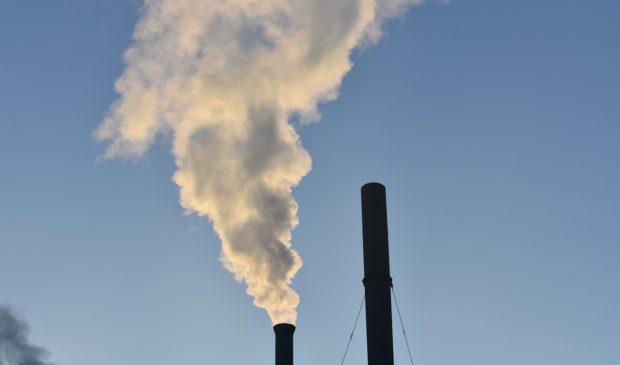County plans to lower emissions to comply with Clean Air Act
Friday, July 9, 2021 by
Seth Smalley At the June 29 meeting of the Travis County Commissioners Court, commissioners discussed strategies to reduce particulate matter emissions with Jon White, director of Natural Resources and Environmental Quality, and Adele Noel, the environmental project manager for air quality.
“We’re here to address particulate matter pollution, and some specific actions that are being taken by the Central Texas region to reduce PM 2.5, which is fine and inhalable particulate matter, which poses particular health effects,” White told commissioners.
PM 2.5 is any particulate matter with a diameter of less than 2.5 micrometers.
“This particulate matter poses a health risk to everyone because they’re so small that they can bypass the nose and throat, penetrating deep into the lungs, and some may even enter the circulatory system,” Noel said. She went on to explain how exposure to particulate matter has been linked to heart and lung disease, asthma, heart attacks, birth defects, bronchitis and premature death.
“Particles may be emitted directly from construction sites, unpaved roads, smokestacks and fires, as well as complex reactions of chemicals such as sulfur dioxide, nitrogen oxides … pollutants that come from power plants, industrial machines and cars,” Noel said.
The federal Clean Air Act, she explained, requires the Environmental Protection Agency to set air quality standards for six specific pollutants: carbon monoxide, ground level ozone, lead, nitrogen dioxide, sulfur dioxide and particulate matter. The EPA recently announced plans to reconsider standards for PM 2.5. “That probably means that it will be lower than the current level,” Noel speculated.
For Travis County, that means many high-PM areas will be at risk for non-attainment designations.
The EPA defines non-attainment as any area that either does not meet or contributes to a nearby area not meeting ambient air quality standards. Not exceeding Clean Air Act standards is also important in terms of economic and transportation developments getting green-lit.
The construction of the new Tesla plant and the Samsung plant, for example, “may not have been possible if we had exceeded the standards.” Similarly, the Interstate 35 expansion and Project Connect could have been delayed substantially.
“Our area is more likely to exceed the federal standard for PM 2.5 than for ozone,” Noel said. She went on to recommend a list of reduction strategies – which were not touched upon during the discussion – devised by a subcommittee of the Central Texas Clean Air Coalition including herself and relevant parties from Austin, Round Rock, Bastrop and EPA.
“This list provides many options for the members to consider implementation as part of their air quality regional plan,” Noel said.
The Capital Area Council of Governments is distributing the strategies to organizations and counties for review. These entities will return to CAPCOG with a list of the strategies they wish to implement, which in turn will be added to the CAPCOG Air Regional Quality Plan.
The plan will be presented to the Clean Air Coalition on Aug. 11. If approved, it will go on to the EPA.
Photo made available through a Creative Commons license.
The Austin Monitor’s work is made possible by donations from the community. Though our reporting covers donors from time to time, we are careful to keep business and editorial efforts separate while maintaining transparency. A complete list of donors is available here, and our code of ethics is explained here.
You're a community leader
And we’re honored you look to us for serious, in-depth news. You know a strong community needs local and dedicated watchdog reporting. We’re here for you and that won’t change. Now will you take the powerful next step and support our nonprofit news organization?



